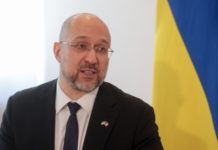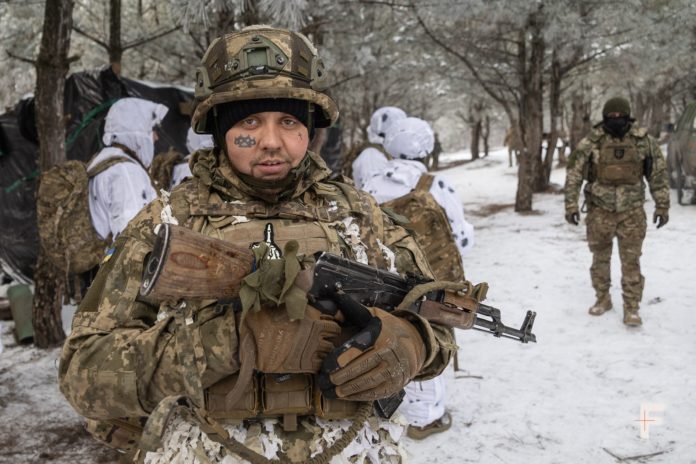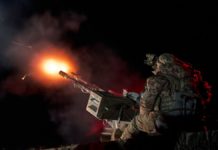As of April 2, 2025, the situation on the front remains extremely tense. Russian forces have intensified offensive operations in multiple directions, focusing efforts on Kharkiv region, Donetsk region, and the Kupiansk area. The Armed Forces of Ukraine (AFU) continue to hold the line and inflict significant losses on the enemy. Meanwhile, diplomatic initiatives are underway, international support is intensifying, and Ukraine is implementing new military rotation and conscription regulations.
Frontline Situation
According to the General Staff of the Armed Forces of Ukraine, 176 combat engagements took place over the past day (from 12:00 April 1 to 12:00 April 2). The hottest areas include Kharkiv, Kupiansk, Lyman, Siversk, Avdiivka, and Mariupol directions.
- In the Kharkiv direction, Russian troops intensified attacks near Lyptsi and Vovchansk but were repelled by Ukrainian defenders.
- In the Kupiansk area, heavy fighting continued near Synkivka and Ivanivka, where Russian forces suffered notable losses.
- In the Lyman and Siversk sectors, the enemy attempted assaults near Torske, Nevske, Serebrianske Forestry, and Rozdolivka.
- In the Avdiivka sector, Ukrainian forces held defensive lines near Berdychi, Orlivka, and Sieverne.
- Near Mariupol, clashes escalated around Novotroitske and Prechystivka.
Additionally, overnight, Russia launched a massive drone attack using 74 Shahed-type UAVs from various directions. Ukrainian air defense shot down 41 of them. Energy infrastructure in two regions was damaged, and civilians, including children, were injured.
Russian Losses
According to the General Staff of Ukraine, Russian forces lost the following on April 1:
- Personnel — 1,410 (cumulative losses since the full-scale invasion: 918,180);
- Tanks — 10 units (total: 10,515);
- Armored combat vehicles — 24 units (total: 21,880);
- Artillery systems — 24 units (total: 25,576);
- Operational-tactical UAVs — 38 units (total: 9,632);
- Vehicles — 39 units (total: 23,855);
- Special equipment — 7 units (total: 2,862);
- Cruise missiles — 1 unit (total: 2,293).
Ukrainian Gains & Eliminated Targets
Ukrainian forces successfully struck multiple Russian targets in occupied territories:
- A command post and ammunition depot were destroyed near Tokmak.
- Special Operations Forces and artillery targeted and eliminated a Russian dugout near Lyman, killing at least 15 enemy troops.
- On the southern front, a Raptor-class patrol boat conducting reconnaissance was hit by a kamikaze drone near Kinburn Spit.
- Two BM-21 Grad MLRS and a mobile electronic warfare system were neutralized near Bakhmut.
These targeted operations demonstrate Ukraine’s effectiveness in degrading enemy personnel, logistics, and command systems.
Diplomatic Initiatives & Negotiations
President Volodymyr Zelenskyy announced that on April 4, Ukraine will begin closed-door consultations with selected partner states to form a potential international security contingent. The goal is to secure infrastructure, airspace, and logistical routes in the rear.
Meanwhile, Russia rejected the latest U.S. peace proposals, calling them “unacceptable” and “detached from reality.” The U.S. Department of State responded by affirming readiness for dialogue — but only if Russia halts hostilities and respects Ukraine’s sovereignty.
NATO Secretary General Jens Stoltenberg told CNN that the Alliance is preparing a long-term aid framework for Ukraine, including annual support in the tens of billions of dollars. A “multi-guarantee” formula involving key allies is under discussion.
German Chancellor Olaf Scholz expressed hope for a unified EU position at the April 4–5 summit in Brussels, where Ukraine support will top the agenda.
International military and financial assistance:
- NATO is working on a mechanism to provide Ukraine with predictable and structured support, which could exceed $100 billion over the next five years.
- Germany has confirmed it will deliver additional IRIS-T air defense systems by summer 2025.
- The EU is accelerating the disbursement of the €5 billion Ukraine Assistance Fund, with allocations for energy infrastructure and defense needs.
- The U.S. Congress continues discussions on a new Ukraine aid package, potentially exceeding $60 billion, pending bipartisan agreement.
Humanitarian Situation in Ukraine
During the night of April 2, Russian drone attacks damaged critical infrastructure in central and northern Ukraine. At least one civilian was killed, and ten others were injured, including three children, some in critical condition.
In Kharkiv, a drone strike caused a large office building fire that burned for over four hours. In Dnipro, drone debris ignited an energy transformer.
Ukraine’s State Emergency Service reported power outages in over 40 settlements. Repair crews are already working to restore electricity.
The International Organization for Migration (IOM) pledged humanitarian assistance to affected regions, including heating supplies and first aid kits.
Domestic Situation in Ukraine
New rules on reservist deferrals took effect on April 1. All previous exemptions have been nullified. Only companies officially listed as critical infrastructure may now apply for deferrals under updated criteria.
The Ministry of Defense introduced a new troop rotation mechanism. Soldiers serving more than 90 consecutive days on the frontlines will be guaranteed at least 30 days of rest. The policy was developed in consultation with the General Staff and parliamentary committees.
Ukraine’s government extended martial law and general mobilization for another 90 days, until June 30, 2025, citing persistent military threats and active fighting.
Conclusion
April 1–2 confirmed the sustained intensity of fighting in eastern and southern Ukraine. Russian forces continue to suffer heavy losses in manpower and equipment. Diplomatic avenues remain blocked by Moscow’s intransigence, while Ukraine’s allies ramp up long-term support mechanisms. At the same time, internal reforms in Ukraine aim to enhance military resilience, rotation capacity, and personnel protection — reinforcing national defense for the long haul.
🤝 SUPPORT US 💙💛
We continue to work only because you read and support us. If you appreciate what we do, please become our sponsor or donate here👇
☕️ buymeacoffee.com/meaninuak
or
☑️ patreon.com/MeanwhileinUkraine
Your support helps us continue delivering timely and accurate updates. Stay informed and stand with Ukraine! 🇺🇦
Together we are stronger! 🇺🇦
























